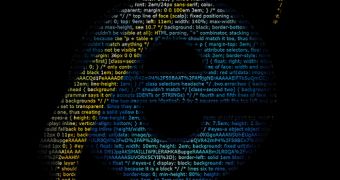Microsoft has streamlined and automated the installation process of Internet Explorer 8 Release Candidate 1 as much as possible. With the advent of RC1, IE8 is able to uninstall previous Beta versions of Internet Explorer 8 (users are no longer required to perform the tasks manually) and install the Release Candidate Build. At the same time, the upgrade experience from Internet Explorer 6 and Internet Explorer 7 to IE8 RC1 will be seamless and will require end-users to simply follow the instructions presented by the installer. When it comes down to moving from Beta 1 or Beta 2 to RC1, IE8 offers different experiences in accordance with the type of operating system the browser runs on top of.
On Windows XP or Windows Server 2003, “If you have Internet Explorer 8 Beta 2 or prior installed, the IE8 RC1 installer will automatically uninstall any earlier versions and then install the latest version of IE8 RC1 for you. You will be prompted to reboot twice. The first reboot is to remove pre-RC1 version from your machine and the second one to complete the IE8 RC1 installation. When you launch Internet Explorer, you can open the Help->About Internet Explorer dialog to see the version number 8.0.6001.18372,” Jane Maliouta, program manager in charge of the deployment and setup of IE, revealed. Maliouta informed that there were prerequisite updates to deploying Internet Explorer 8 RC1. The installation of IE8 RC1 on multi-core XPSP2 x86 machines requires either KB932823, or KB946501.
“This update resolves a problem in which an access violation occurs when an application exists on a Windows XP SP2-based multi-core computer. It will be installed automatically if you select ‘Install the latest updates’ option in Setup Wizard. If this update fails to install successfully, IE8 installation will be blocked until you manually install this update from Microsoft Download Center,” Maliouta added.
On Windows Vista and Windows Server 2008, the process of installing Internet Explorer 8 Release Candidate 1 is even simpler than on their precursors.
“Based on the feedback we received from you, our users, we changed the install of IE8 to automatically replace the older builds as part of the installation. You are no longer required to manually uninstall IE8 Beta builds if you want to upgrade to IE8 RC1. All you have to do is run the IE8 RC1 installer, and it will automatically replace the previous IE8 build with the latest one,” Maliouta explained.
IE8 RC1 will only reboot a single time on Vista and Windows Server 2008. But ahead of deployment, IE8 RC1 is tied to KB937287 and KB957388 updates. KB937287 in particular will block the installation, in case it is not integrated into the operating system.
“KB937287 - This update helps improve reliability and performance when you install or remove Internet Explorer 8 and future individual updates from Microsoft,” Maliouta stated. “KB957388 – This update addresses known application compatibility issues in Windows Vista. It will be installed automatically, if you select ‘Install the latest updates’ option in the Setup Wizard.”
The Build number of IE8 RC1 on Vista and Windows Server 2008 is the same as that on XP and Windows Server 2008, namely 8.0.6001.18372.
Internet Explorer 8 (IE8) Release Candidate 1 (RC1) is available for download here.

 14 DAY TRIAL //
14 DAY TRIAL //